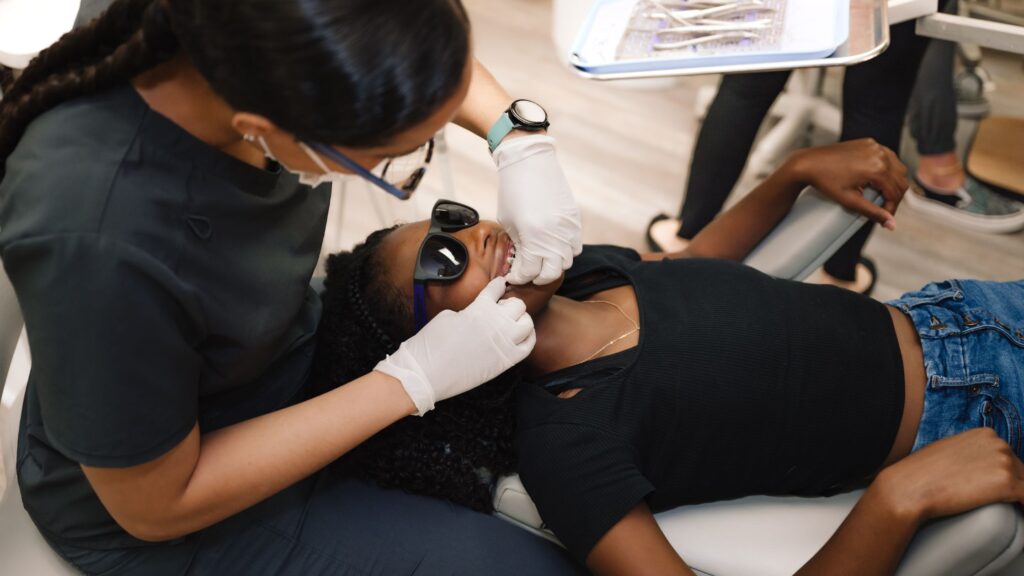There are many forms of tooth malocclusion or misalignment that can affect your smile, your speech, and your bite. Dental braces are designed to correct these types of problems over a period of time so as to restore your natural smile.
Anyone with misaligned teeth is a good candidate for braces, but first, you need to know the basics about what they are and how they work. Also, since there are many types of braces available these days, you will want a basic knowledge of what these are so you can choose the type that’s right for you.
What Specific Problems Do Braces Correct?
Do you need dental braces? There are many people who do at some point during their life, so you wouldn’t be nearly alone if you do. Here are some of the most common tooth malocclusion problems that braces are meant to correct:
- Overbite. This is when your upper teeth go past your lower teeth, making it more difficult to chew. People with overbite problems may wear down the enamel on their front teeth and may damage the gum tissue just inside their upper teeth.
- Underbite is the opposite problem from overbite. It happens when the lower teeth stick out in front of the upper. Aside from what’s often referred to as a “bulldog smile,” underbite can overstress your jaw, give you headaches, and lead to TMJ disorders.
- Crossbite or open bite. Crossbite is where one or more teeth in one jaw cross over and fit into one or more teeth in the other jaw. Open bite is when the front or back teeth do not rest evenly and touch when your mouth his closed.
- Overcrowding. Tooth crowding occurs when teeth are too close together so that new teeth cannot easily (if at all) come in. This makes it difficult to floss properly too and increases the risk of cavities.
- Spacing. When teeth are too far apart, you get a “gappy smile.” Worse, food particles and bacteria tend to easily build up in these extra-wide interdental spaces, causing cavities and/or gum disease.
These are only a handful of possible tooth misalignment issues, all of which (if severe enough) can cause serious oral health problems and may merit the use of dental braces.
Genetics, habits like thumb-sucking and tongue-thrusting, injuries, and more can cause or increase the risk of problems braces can fix. Whatever the cause, serious malocclusions should be addressed early to prevent their further development.
What Age Groups Are Braces For?
As soon as you realize that you have a dental misalignment problem, you should see your local orthodontist to find out if you need braces. The sooner you act, the better, regardless of your age. And braces can be effective for any age group.
That said, it’s ideal if children go in for an orthodontic examination at around age seven. Discovering and treating these kinds of problems early can make it easier, though it may require two phases of treatment. Palatal expanders can be used while a young child’s bones are still growing to correct overcrowding and certain forms of tooth misalignment. Braces may be reserved, in some cases, for the second phase – after all permanent teeth have come in (12 or 13 years old usually.)
Adults, too, can benefit by wearing braces. It’s not just for children, as is often commonly assumed. Anyone who desires to straighten out their teeth is a good candidate for dental braces.
How Do Braces Work?
There are various types of tooth bracing systems these days, and they don’t all work in exactly the same way. But they do have some basic things in common.
First of all, all braces work by slowly exerting constant pressure in a particular direction on teeth that are out of position. Eventually, teeth so “harnessed” can be gently nudged into correct alignment. A system of metal wires and brackets used to be the only major option for accomplishing this, but now there are clear aligners that do the same thing in a different way.
The pressure exerted by braces stretches the periodontal membranes surrounding teeth on one side while compressing them on the opposite side. Over time, bone material on one side of the “pressurized” tooth erodes, while it grows on the opposing side. This, in essence, pushes the tooth through the bone to a new position – but while giving plenty of time for new bone to grow so that no damage is done.
What Types of Braces Are There?
The most traditional type of braces is that which uses metal wires and brackets. Stainless steel is the metal of choice, and the brackets must be bonded to the teeth during the treatment process. Rubber, elastic, ties attach to the brackets, although self-ligating metal braces use clips instead.
You can get essentially the same thing as metal braces but in ceramic. The coloration is closer to that of your teeth, but ceramic is not as strong as metal either – the downside.
Also, note you can get gold-plated, titanium, or fully stainless steel braces. This is normally done when one is allergic to nickel, which may be in parts of the brace system otherwise.
Lingual braces are installed on the inside of your teeth instead of the outside. This keeps them out of sight, but it can also make them more difficult to clean and lengthen the duration of the treatment.
Clear acrylic aligners, such as Invisalign®, are the most recent option when it comes to tooth realignment. They are removable so that you can take them off while eating or exercising as long as you wear them 22 hours a day. You wear a series of aligners for two weeks at a time. Each aligner picks up where the last one left off in shifting misaligned teeth back into position. Many people like Invisalign® because the aligners are transparent, making it difficult for people to notice you are wearing “braces.”
The Process Of Getting Braces
After an initial consultation at your orthodontist’s office, you may decide to wear some kind of dental braces. After you decide which kind, X-rays and molds of your teeth will be taken, and your mouth will be carefully measured.
A treatment plan will be formulated, customized to your precise mouth and tooth contours, the particular misalignment problems you suffer from, and other factors. In some cases, an extraction may have to be done first to make room for overcrowded teeth to move back into normal position.
With metal braces and most other systems, brackets are attached to each tooth using dental cement. The wires are then attached, along with the elastic bands or clips.
In the case of Invisalign®, 3D images of your teeth are taken, and the first series of aligners are manufactured in the dental lab. You then pick up a new batch every 6 to 8 weeks.
To learn more about how braces work and what options you have, contact Beauchamp Orthodontics today for a free no-obligation consultation!



